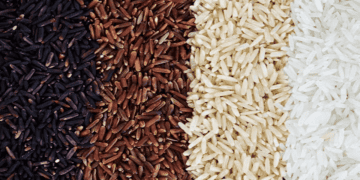Vietnam’s rice export prices continue to lead the global market, maintaining their premium status even after India’s recent lifting of rice export restrictions. Following the removal of India’s export ban in late October, global rice prices experienced a significant decline. For example, 5% broken rice from Pakistan and Thailand dropped to $457-$490 per ton, according to the Vietnam Food Association. Vietnam’s 5% broken rice initially fell to $500 per ton but quickly rebounded to $522 as supplies tightened with the conclusion of the harvest season.
Farmers in Vietnam have shifted toward cultivating higher-quality rice varieties that compete effectively in mid-range and premium market segments. This strategic move has enhanced the value of Vietnam’s rice exports, with fragrant rice varieties now dominating supply. Between January and October 2024, Vietnam exported approximately 7.8 million tons of rice, generating $4.9 billion, a 23% increase compared to the same period last year. The average export price reached $626.2 per ton, marking a 12% year-on-year rise, according to the Ministry of Agriculture and Rural Development.
The Philippines remained Vietnam’s top rice importer, accounting for over 45% of total exports, followed by Indonesia (14.4%) and Malaysia (8.5%). At the same time, Vietnam imported 3.2 million tons of rice worth $1.2 billion, becoming the world’s third-largest rice importer, behind the Philippines and Indonesia. The Department of Crop Production predicts Vietnam’s total rice output this year will reach 43 million tons, enabling the country to export up to 8 million tons while meeting domestic demand. Experts project that Vietnam’s rice export revenues will hit a record $5 billion in 2024.
The latest in supply chain logistics news is now on The Supply Chain Report. Visit ADAMftd.com for free tools related to international trade.
#GlobalAgriculture #RiceExports #VietnamEconomy #FoodSupplyChain #ExportTrends

















